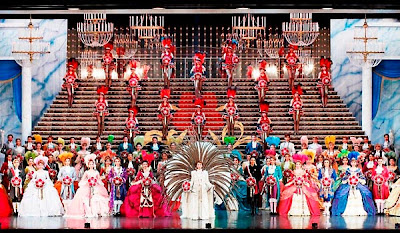Last year during January and February Anna's mom came to visit us and we took a trip to the "middle south" region of Chile. We started in the city of Valdivia, about a 12 hour bus ride from Santiago. Valdivia is a nice little city, famous for its good beer - there is a big Kunstmann brewery in town where you can do tours - and for its fish market on the river, where sea lions hang out begging for scraps.
 |
| Valdivia's fish market |
 |
| The "stray dogs" at the fish market |
From Valdivia we took a bus out to a national park nearby. It has a beautiful rain forest overlooking the coast, with short but pretty trails along the crest of the hills.
We discovered a local summer festival on the way back to Valdivia, so we stopped for some amazing fresh seafood and listened to some traditional Mapuche music. Mapuche are one of the biggest native tribes in Chile and you can see a lot of their culture here, especially in the south.
 |
| At the rain forest near Valdivia |
 |
| The fresh seafood in the south is incredible! |
Next we went to the the small city of Puerto Varas, located on the edge of the huge Llanquihue Lake. Across the lake is the Mt. Fuji-like volcano Osorno and the much rockier Calbuco, which just recently erupted and covered the nearby towns in ash.
 |
| Hiking by Mt. Osorno in Petrohue |
We camped next to Osorno in a little park called Petrohue. A lot of people stop here on their way across lake Petrohue into Argentina. The weather was absolutely miserable that night and we headed back to Puerto Varas the next day to try and dry ourselves out. The weather finally cleared up and we were able to enjoy wandering around the city and trying some local food and wine. It's a very picturesque town with beautiful old churches and gorgeous views of the mountains.
 |
| Camping by the lake in Petrohue, looking towards the border with Argentina |
 |
| Finally drying out after a soggy night in Petrohue |
Our next stop was a very small town on the other side of Lake Llanquihue called Puerto Octay. It was settled by German immigrants around the turn of the century and all over town you can see old German-style houses and heritage. It's a sleepy place, so don't go there looking for adventure, but if you want a quiet place to relax for a couple of days it's great.
Finally we made our way by buses and ferries to the island of Chiloe. It's considered one of the most beautiful places in Chile and it's full of a lot of history and old legends. The seafood is amazing, the rolling green hills next to the ocean are beautiful and there are many national parks with good hiking and other outdoor sports. We did a day trip from the city of Ancud to see a penguin colony, which was really fun- the oceans around Chiloe have an amazing amount of wildlife. On our 30 minute tour we saw penguins, geese, sea lions, huge jelly fish and a sea otter.
 |
| Off to see some penguins in Chiloe! |
Our last stop was the city of Castro, a little bit south and east on Chiloe. It's famous for it's "palafitos", which are colorful little houses perched on stilts over the ocean. It also has some of the famous old wooden churches, some of which are national heritage sites. Like everywhere in the south you can get amazing seafood, including one of Chiloe's most famous dishes, "curanto", which is a kind of seafood stew that is cooked in a hole in the ground with hot rocks.
 |
| "Palafitos", or stilt-houses, in Castro |
When you spend all your time in smoggy Santiago surrounded by a California-like landscape, it's so refreshing to visit the south. (Especially for a Pacific Northwest native like myself.) I've missed seeing big trees, rivers and green mountains everywhere, so visiting the Chilean south felt a lot like a trip home to Oregon, but with a really fascinating new culture and some amazing seafood to make things more interesting. It was a great trip and a wonderful chance to spend some time with Anna's mom.


















Comments
Post a Comment